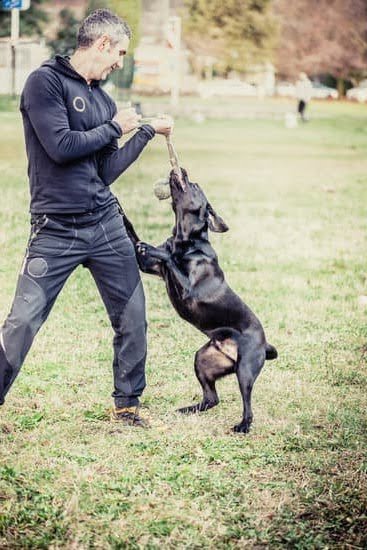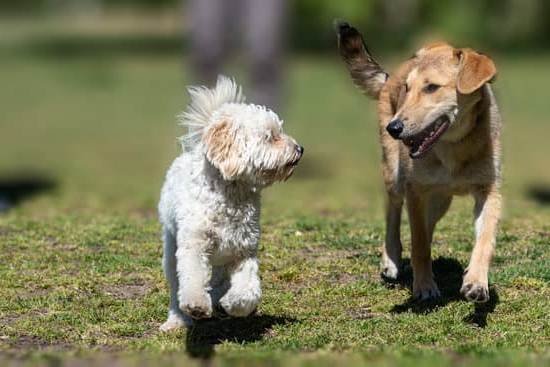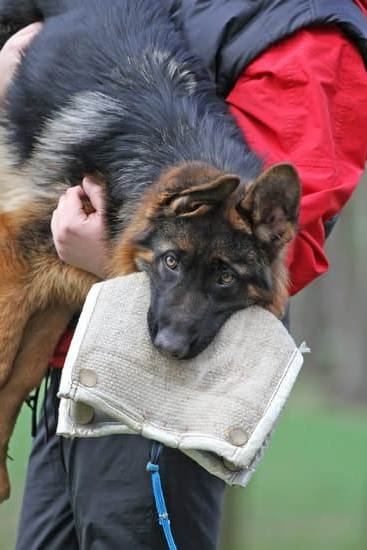When it comes to training our canine companions, food can be a powerful tool. It serves not only as a motivation and reinforcement for desired behaviors but also as an opportunity to nourish our dogs with love and affection. But with so many options available, what food should we use to train our dogs effectively?
In this article, we will delve into the significance of food in dog training and explore different types of treats, considerations for healthy nutrition, tailoring treats to individual dogs, the role of positive reinforcement, guidelines for choosing the right food rewards for different exercises, introducing novel food rewards, and the importance of incorporating verbal praise and affection into the training equation.
By understanding the importance of food in dog training and making informed choices, we can strengthen the bond with our four-legged friends while helping them learn and thrive.
Types of Food for Dog Training
When it comes to training a dog, food plays a crucial role in motivating and reinforcing behaviors. There are various types of food options available for dog training, each with its own benefits and considerations.
High-Value Treats: Uncovering the Best Choices for Motivation and Reinforcement
High-value treats are typically irresistible to dogs, making them excellent motivators during training sessions. These treats have a strong scent and flavor that captures your dog’s attention, making them more likely to respond to your commands. Some popular high-value treats include freeze-dried liver, cheese cubes, and small pieces of cooked meat.
Using high-value treats during training can be particularly effective when teaching new or complex behaviors. However, it is essential to use these treats sparingly to maintain their novelty and effectiveness. Reserve high-value treats for especially challenging exercises or as occasional surprises during training sessions.
Commercial Dog Treats: Evaluating the Pros and Cons
Commercial dog treats are widely available in pet stores, offering convenience and variety in training rewards. They come in different flavors, sizes, and textures, allowing you to find options suitable for your dog’s preferences and training needs. These treats are often designed specifically for dogs, ensuring they meet certain nutritional requirements.
While commercial dog treats can be a convenient option for training purposes, it is crucial to read the labels carefully. Look for treats made with high-quality ingredients and without artificial additives or preservatives. Be cautious of treats that contain excessive fillers or unnecessary additives that may not provide optimal nutrition for your dog.
Homemade Treats: Nourishing Your Dog with Love and Affection
If you prefer full control over your dog’s diet or want to avoid potential allergens found in commercial treats, homemade treats can be an excellent alternative. Homemade treats allow you to choose the ingredients you want to include while avoiding any harmful additives.
When making homemade treats, it is important to ensure that the ingredients are safe for dogs and that you follow proper food safety guidelines. Consider using dog-friendly ingredients like lean meats, fruits, and vegetables. Avoid using harmful foods such as chocolate, onions, grapes, or raisins.
Making your own treats also gives you the opportunity to show your love and affection through the effort put into preparing them. Your dog will appreciate the extra care and attention you put into their training rewards.
Healthy vs. Unhealthy Treats
When it comes to training your dog, choosing the right treats is crucial for their overall health and well-being. Healthy treats not only provide optimal nutrition but also serve as a motivation to reinforce positive behaviors. On the other hand, unhealthy treats can lead to weight gain, dental problems, and even digestive issues. In this section, we will discuss how to make informed choices when it comes to selecting treats for your furry friend.
Identifying Nutritious Ingredients: What to Look for in Dog Treats
When selecting treats for your dog, it is important to read the ingredients list carefully. Look for treats that contain high-quality protein sources such as chicken or fish. Avoid treats that list fillers like corn or wheat as their main ingredients since they offer little nutritional value. Additionally, look for natural additives like fruits and vegetables which provide essential vitamins and minerals.
Avoiding Harmful Additives: Ingredients to Steer Clear of in Treats
To ensure the health of your dog, it is important to steer clear of certain ingredients in treats. Some common additives include artificial preservatives (such as BHA and BHT), artificial colors, and excessive amounts of sugar or salt. These additives can have negative effects on your dog’s health and may contribute to allergies or sensitivities.
Balancing Treats with Regular Feeding: The Importance of Portion Control
While incorporating treats into training is essential, maintaining a balanced diet is equally important for your pup’s well-being. Treats should only account for a small portion of their daily caloric intake. Be mindful of the size and frequency of treats given during training sessions. Keep in mind that every dog has unique dietary needs based on their breed, age, weight, and activity level.
By making informed choices about healthy treats based on nutritious ingredients, avoiding harmful additives, and practicing portion control, you can ensure that your furry friend receives optimal nutrition while training. This will not only strengthen their physical health but also enhance the effectiveness of the training process. Remember, a well-balanced diet is key to a happy and obedient canine companion.
Tailoring Treats to Individual Dogs
When it comes to training dogs, it is important to consider the individual needs and characteristics of different breeds and sizes. Tailoring treats to suit your dog’s specific requirements can enhance their training experience and ultimately lead to more effective results. In this section, we will explore the considerations for choosing treats that are suitable for different breeds and sizes.
For small breeds, it is essential to select treats that are sized appropriately for their mouths. Smaller treats are easier for them to consume and digest, ensuring that they can fully enjoy their rewards during training sessions. Additionally, the texture of the treats should be taken into account. Some small breeds may struggle with harder or crunchier treats, so opting for softer options can be more enjoyable for them.
On the other hand, large breeds require treats that can withstand the power of their strong jaws. Choosing larger-sized treats that they cannot easily gulp down will motivate them to work harder during training. It is also a good idea to opt for treats that have a chewy or crunchy texture as this can engage their natural instinct to chew.
For dogs with special dietary needs such as allergies or sensitivities, it is crucial to find treats that accommodate these requirements. Many brands now offer a wide range of specialized treats that are grain-free, hypoallergenic, or formulated for specific dietary restrictions. By selecting treats that cater to your dog’s unique needs, you can ensure they receive both effective training rewards and optimal nutrition.
Tailoring treats to suit individual dogs based on breed and size not only makes the training sessions more enjoyable but also ensures that your furry friend receives the proper motivation and reinforcement they need. By considering the specific needs of your dog when selecting their training rewards, you can create an effective and personalized training plan tailored specifically to them.
Positive Reinforcement Training
Positive reinforcement training is a highly effective method for teaching dogs new behaviors and strengthening the bond between them and their owners. Food rewards play a crucial role in this type of training as they serve as motivation and reinforcement for desired behaviors. By associating treats with these behaviors, dogs learn to repeat them in order to receive positive reinforcement in the form of food rewards.
The foundation of positive reinforcement training lies in associating treats with desired behaviors. This means that whenever a dog exhibits the desired behavior, such as sitting or staying, they are immediately rewarded with a treat. Over time, the dog learns that performing these actions leads to tasty rewards. This association helps reinforce the behavior, making it more likely that the dog will continue to exhibit it in the future.
Timing is everything when it comes to using food rewards effectively in positive reinforcement training. Treats should be given immediately after the desired behavior occurs to ensure that the dog understands what they are being rewarded for.
For example, if you want to train your dog to come when called, you should give them a treat as soon as they successfully respond to your command by coming towards you. This immediate reward reinforces their decision to come and increases the likelihood of them doing so again in the future.
Fading treats is also an important aspect of positive reinforcement training. While food rewards are highly effective at motivating dogs initially, it is essential to gradually reduce reliance on them over time.
Once a behavior has been consistently reinforced through treats, you can start phasing out the treats by intermittently rewarding with praise or other forms of positive reinforcement instead. This helps prevent dogs from becoming overly dependent on food rewards and encourages them to perform without expecting treats every time.
In summary, food rewards are powerful tools in positive reinforcement training as they strengthen the training bond between dogs and their owners. By associating treats with desired behaviors, timing their delivery correctly, and gradually fading their reliance, food rewards can effectively motivate dogs to learn new behaviors and deepen their connection with their owners.
However, it is important to remember that food rewards should always be used in balance with other forms of positive reinforcement such as verbal praise and affection in order to create a well-rounded training experience.
| Aspect | Description |
|---|---|
| Role of Food Rewards in Positive Reinforcement Training | Serve as motivation and reinforcement for desired behaviors. |
| Association between Treats and Behaviors | Dogs learn to repeat desired behaviors in order to receive treats. |
| Timing of Treat Delivery | Treats should be given immediately after desired behaviors occur. |
| Fading Treats Over Time | Gradually reduce reliance on treats by intermittently rewarding with praise or other positive reinforcement. |
Training Treat Guidelines
When it comes to dog training, choosing the right food rewards for different exercises is crucial in reinforcing desired behaviors and maintaining engagement. Different exercises require different levels of motivation, so it’s important to select treats that will encourage obedience and response from your dog. In this section, we will explore some guidelines for choosing the right food rewards for basic commands, advanced tricks, and problematic behaviors.
Basic Commands
For basic commands such as sit, stay, and come, it’s important to choose treats that are highly motivating and easy to consume quickly. Small, soft treats that can be easily broken into smaller pieces are often a great choice. Look for treats with strong flavors such as chicken or beef that will capture your dog’s attention. These high-value treats will make your dog eager to follow commands as they associate them with getting rewarded.
Advanced Tricks
When teaching advanced tricks like rolling over or paw shake, you may want to consider using special rewards that are more enticing than ordinary treats. This could include freeze-dried meat or even small pieces of cheese. These unique rewards will help motivate your dog to learn more complex movements and behaviors. Remember to keep these special rewards only for specific tricks to maintain their effectiveness.
Problematic Behaviors
For problematic behaviors such as excessive barking or chewing on furniture, using treats can be an effective way to divert your dog’s attention and redirect their behavior towards something positive. In these cases, you can use long-lasting chew treats that not only occupy your dog but also reward them for focusing on appropriate activities instead of unwanted behaviors. Peanut butter stuffed toys or dental chews are examples of suitable options.
By tailoring the food rewards based on the type of exercise you are teaching, you can ensure that your training sessions are effective in reinforcing desired behaviors and keeping your dog engaged. Remember to always consider your dog’s preferences and dietary needs when selecting treats. A healthy and happy dog will be more motivated to learn and strengthen the bond between you and your furry companion.
Introducing Novel Food Rewards
In the world of dog training, keeping sessions fresh and exciting is essential to maintain engagement and motivation. One way to achieve this is by introducing novel food rewards. By varying the treats used during training, you can keep your dog interested and eager to learn. In this section, we will explore different strategies for incorporating novelty into your training sessions.
One effective technique is to rotate treats regularly. This helps to avoid treat fatigue, where a dog becomes disinterested in a specific reward due to its overuse. By switching up the treats you use, you can maintain your dog’s enthusiasm throughout the training process. Experiment with different flavors, textures, and sizes of treats to find what appeals most to your furry friend.
Another way to introduce novelty is by mixing it up and offering a variety of foods as rewards. While commercial treats are convenient and readily available, consider using other foods that your dog enjoys such as small pieces of cooked meat or vegetables like carrots or green beans. This not only adds excitement to the training session but also provides additional nutritional benefits for your dog.
When introducing new treats during training, it’s important to ensure that your dog enjoys them. Some dogs may have preferences or sensitivities when it comes to certain flavors or ingredients. Test out new treats in a low-stakes environment before using them extensively during training sessions. Pay attention to how your dog reacts and adjust accordingly if needed.
To summarize, introducing novel food rewards during training sessions keeps things fresh and exciting for your canine companion. By rotating treats regularly, mixing up different types of foods, and testing out new options before committing to them fully, you can maintain your dog’s engagement and make each training session enjoyable for both of you.
| Treat Strategy | Description |
|---|---|
| Rotate treats regularly | Switch up the treats used during training to avoid treat fatigue |
| Mix it up with variety | Offer a range of different foods as rewards, including commercial treats and fresh options such as cooked meat or vegetables. |
| Test new treats | Introduce new treats gradually and observe your dog’s preferences and reactions to ensure they enjoy them. |
Beyond Food
In addition to using food rewards in dog training, incorporating verbal praise and affection can be a powerful tool in reinforcing desired behaviors and strengthening the bond between you and your canine companion. Verbal cues paired with treats can enhance learning and help your dog understand what behavior is being rewarded.
One way to incorporate verbal praise is by using a consistent cue or command word when presenting the treat. For example, saying “good sit” or “great job” right before giving the treat can help your dog associate the praise with the action they just performed. This reinforces their understanding of the desired behavior and makes it more likely that they will repeat it in the future.
Alongside verbal praise, physical affection such as belly rubs, petting, and scratching behind the ears can also play a crucial role in training success. Dogs are social animals that thrive on touch and physical contact from their human companions. By providing physical affection immediately after a successful training session or when your dog displays good behavior, you are reinforcing positive associations with both commands and rewards.
It is important to strike a balance between food rewards, verbal praise, and physical affection when training your dog. While treats are often highly motivating for dogs, relying solely on food rewards may create an over-dependence on treats for obedience. Gradually reducing reliance on food rewards over time by incorporating more verbal cues and physical affection is essential to ensure long-term success in training while maintaining a strong bond with your furry friend.
Conclusion
In conclusion, the power of food in dog training cannot be overstated. Choosing the right treats for your furry friend can make all the difference when it comes to motivation and reinforcement. High-value treats are a great choice for keeping your dog engaged and excited during training sessions. Commercial dog treats offer convenience but should be evaluated carefully for their pros and cons. Homemade treats are another option that allows you to nourish your dog with love and affection.
When selecting treats, it is crucial to prioritize your dog’s health and nutrition. Look for treats with nutritious ingredients, avoiding harmful additives that can potentially harm your dog’s well-being. Portion control is also vital to maintain a proper balance between treats and regular feeding.
Consider tailoring treats to suit the individual needs of your dog. Small breeds may need smaller treat sizes and textures, while large breeds require treats that can withstand their powerful jaws. Dogs with special dietary needs or allergies should also be accommodated accordingly.
Positive reinforcement training relies on the use of food rewards to strengthen the bond between you and your canine companion. By associating treats with desired behaviors, you create a positive foundation for learning. Timing is key, as using treats at the right moment helps capture and encourage good behavior. Gradually fading out food rewards can ultimately lead to a more independent and reliable response from your dog.
To keep training sessions fresh and exciting, introducing novel food rewards is essential. Rotate different treats to avoid treat fatigue and maintain engagement. Mixing up various foods can also help keep dogs interested in the training process. Testing new treats ensures that your furry companion enjoys their training experience fully.
Lastly, remember that food rewards are not the only way to reinforce training success. Verbal cues paired with encouragement, as well as physical affection such as belly rubs or petting, can further strengthen the bond between you and your dog. Balancing different forms of rewards will help find the ideal combination of food, praise, and love in your training sessions.
Frequently Asked Questions
What should I feed my dog for training?
When it comes to deciding what to feed your dog for training, it is important to choose treats that are both healthy and appealing to your furry friend. Look for treats that are small and easy to handle, so your dog can quickly eat them and return their focus back to the training session. Consider using foods that have a strong aroma or flavors that your dog loves, as this can serve as an additional motivation during training.
It’s also wise to pick treats that are low in calories, especially if you’ll be giving multiple treats throughout a training session. Ultimately, finding the right treats for your dog’s training will involve trial and error, observing their preferences, and ensuring they maintain a balanced diet overall.
Should I use food to train my dog?
Using food as a reward during dog training can be highly effective and beneficial for several reasons. Food is a powerful motivator for most dogs and allows you to reinforce positive behaviors during training sessions easily. By associating certain actions with tasty treats, you create positive associations in your dog’s mind, making them more likely to repeat the desired behaviors in the future.
Additionally, using food rewards enables you to quickly capture their attention and maintain their focus on the training exercises. However, it’s important not to solely rely on food rewards in long-term training plans; gradually transitioning from food rewards to other forms of reinforcement such as verbal praise or playtime can help ensure your dog responds consistently even without treats.
What is the fastest way to train a dog?
The fastest way to train a dog will ultimately depend on various factors such as the individual temperament of the dog and the specific skills or behaviors being taught. However, there are some general tips that can expedite the training process overall. Consistency is key when it comes to fast-paced training – sticking to a regular schedule helps dogs understand expectations more quickly. Using positive reinforcement techniques such as treats or praise immediately after your dog displays the desired behavior reinforces learning faster.
Breaking down more complex commands into smaller steps or tasks can make training more manageable and easier for your dog to understand. Regular, short training sessions that are engaging and enjoyable for both you and your dog will also help accelerate the learning process. Finally, seeking guidance from a professional dog trainer or enrolling in a training program can provide expert advice and support to achieve faster results.

Welcome to the blog! I am a professional dog trainer and have been working with dogs for many years. In this blog, I will be discussing various topics related to dog training, including tips, tricks, and advice. I hope you find this information helpful and informative. Thanks for reading!





